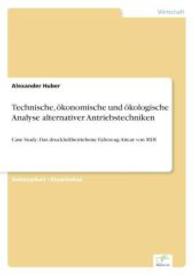Full Description
There are a growing number of challenges in handling medical data in order to provide an effective healthcare service in real-time. Bridging the gap between patient expectations and their experiences needs effective collaboration and connectivity across the healthcare ecosystem. The success of joined-up care relies on patient data being shared between all active stakeholders, including hospitals, outreach workers, and GPs. All these needs and challenges pave the way for the next trend of development in healthcare - healthcare 4.0.
This book covers the state-of-the-art approaches in AI, IOT, cloud, big data, deep learning, and blockchain for building intelligent healthcare 4.0 systems, which provide effective healthcare services in real-time.
The editors consider the benefits and challenges of immersive technologies and mixed reality systems for physical and mental health conditions, and outline and discuss the trending technologies supporting the internet of medical things, patient-centred care, assisted medical diagnoses, and electronic medical records.
Technologies for Healthcare 4.0: From AI and IoT to blockchain is essential reading for researchers, scientists, engineers, designers and advanced students in the fields of computer science, computer vision, pattern recognition, machine learning, imaging, feature engineering, IOT, AI, signal processing, blockchain and big data for healthcare and those in adjacent fields.
Contents
Chapter 1: Introduction to Healthcare 4.0
Chapter 2: Deep learning-based convolutional neural networks for healthcare systems
Chapter 3: Investigations on the impact of AI models in human health using nutrient analysis from food images
Chapter 4: Medical diagnosis of human heart diseases using supervised learning techniques
Chapter 5: Artificial intelligence to predict heart disease and model constructed using TabPy
Chapter 6: Artificial intelligence integrated approach for healthcare management: a critical analysis
Chapter 7: Privacy preserving blockchain-based healthcare model for EMR - a study
Chapter 8: An exploratory review on Internet of Things in healthcare applications
Chapter 9: Augmented reality/virtual reality for detecting anxiety disorder
Chapter 10: Overview of immersive environment exercise pose analysis for self-rehabilitation training of work-related musculoskeletal pains
Chapter 11: IoT-enabled digital revolution of the healthcare system
Chapter 12: Integrated and intelligent cloud service platforms for transition from Healthcare 1.0 to 4.0
Chapter 13: Trending technologies in patient-centric Healthcare 4.0







